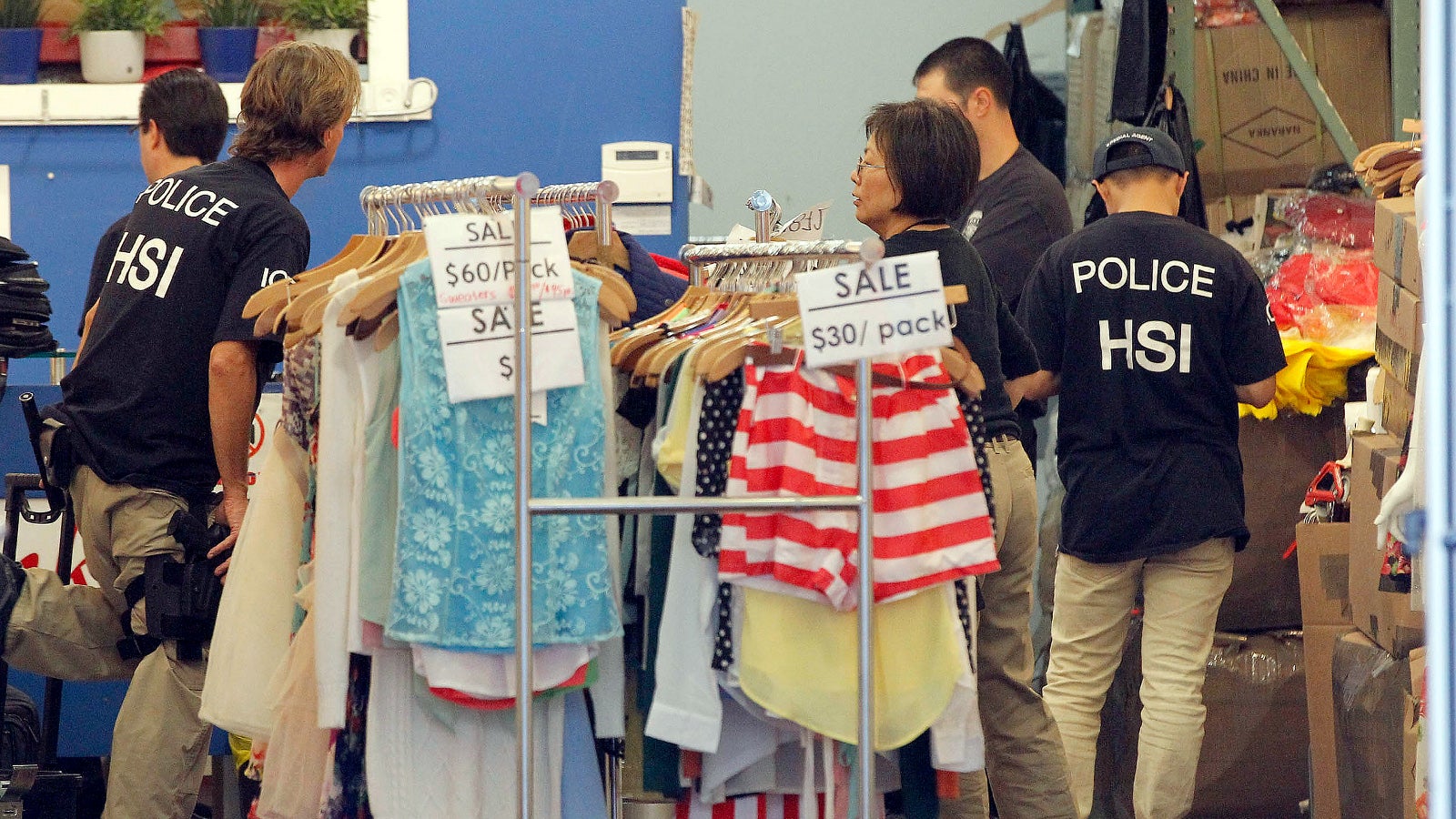How the fast-fashion supply chain became drug cartels’ favorite place to launder cash
Law enforcement officials swarmed Los Angeles’ fashion district yesterday, seizing $65 million in cash and bank accounts they say is part of a massive scheme to launder drug money.


Law enforcement officials swarmed Los Angeles’ fashion district yesterday, seizing $65 million in cash and bank accounts they say is part of a massive scheme to launder drug money.
They described a system in which drug cartels piggy-backed on the globalization of the fashion industry to get the proceeds of their drug sales out of the United States without detection by the authorities. As apparel brands seek to move clothing from factory to store as fast as possible, criminal organizations have found an opportunity to move cash in the reverse direction.
While most apparel manufacturing occurs in emerging markets and the largest fast-fashion brands are European, Los Angeles is still an important city for the trade, home to US brands like Forever 21, bebe, Hot Topic and Papaya. The businesses implicated in this undercover investigation, however, are smaller apparel wholesalers and middlemen in LA’s fashion district.
According to an industry profile (pdf) underwritten by commercial lender CIT and the California Fashion Industry, Mexico is the second-largest source of apparel and textile imports in Los Angeles, behind China. Mexican wages are now cheaper than those in China, while the country’s geographic proximity means faster delivery—and thanks to the North American Free Trade Agreement, wholesalers are rewarded for beginning production in the US, sending the apparel to factories in Mexico to be finished, and then returning them to the US for sale.
That’s where the drug cartels come in: They have lots of cash in the US, and they can’t just declare it when they bring it back over the border and convert it to pesos, especially after restrictions on the use of dollars in Mexico and money-laundering crackdowns have hit banks that appear to have done business with cartels, like HSBC and Citigroup. Instead, the cartels have turned to “black-market peso exchanges,” which work like this:
- A business in Mexico needs to buy goods in Los Angeles—apparel for finishing before it’s returned across the border, or for retail sale.
- A black-market peso broker offers to handle the exchange. It has the cartel’s representatives deliver the dollars to a US wholesaler, who ships the goods to Mexico.
- The business in Mexico receives the goods, and pays the broker in pesos.
- The broker hands the pesos over to the cartel, minus his cut.
And thus, everyone gets what it wants: The cartel has its money moved and converted, the Mexican business receives its goods, the US business gets paid, and the broker makes a percentage.
Everyone, that is, except the government, which has a harder time tracking the money trail. (Following the money, of course, is one of the best tactics against drug cartels, and criminal organizations of all kinds.)
Black-market peso exchanges have been used not just to launder drug money, but also to conceal the ransoms paid for kidnapping victims: After one courier had his cargo of 100 kilograms of cocaine seized by the US government, he was kidnapped and tortured in Mexico until his family and friends brought a $140,000 ransom to a maternity clothing wholesaler in Los Angeles.